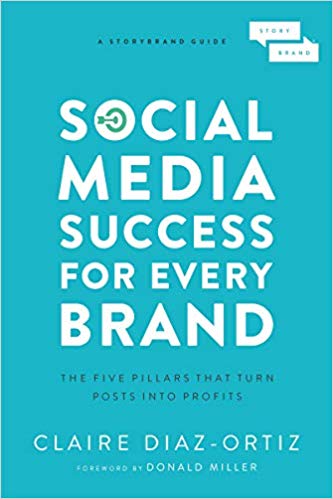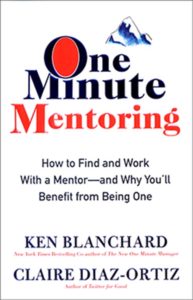In a recent blog post, I wrote about a challenging situation I’m facing with a particular friend. In short, I get requests for favors from this friend from time to time, which I always promptly respond to and complete. But whenever I ask for a favor, the friend is nowhere to be found.
I sought advice from readers, and Steve Gardner was one of the readers who responded with a thoughtful note. I asked him to turn that note into a guest post so you all could benefit from his thoughts on how to deal with someone asking for favors, and how to ask successfully in return.
I’d ask you to make sure to take a look at Key #4, and the sample favor-asking email he provides, as I’m curious what folks think of this. Steve reports success, and states that “While this format is not as warm or friendly as some like or expect, those busy people will appreciate you giving them the critical info up front and back ground info if they need it.” I’m not sure I’d agree, though, and I think I’d need to tweak the email to make it significantly more friendly and grateful sounding.
What do you think?
#
In my experience of similar situations, I’d take a particular tactic to try and turn the relationship around. First, after a few of these unanswered requests happen, and then the person pops back up to ask me for something, I’d reply back and ask for a good time to chat about what they needed help with. Then, after I provided my input to their current situation, I’d pose the question back to them.
I’d say that I respect and value their opinion, but on my recent attempts to get their feedback on an important issue I felt disappointed to not hear back from them. I’d then ask how – the next time I felt I wanted to get their advice – I should contact them in a manner that they would be able to respond?
There are four keys I would keep in mind throughout this process:
1. Assume Positive Intentions.
Oftentimes people want to help, they just get distracted by all their other commitments. Remember this, and don’t assume the worst.
2. Connect with Your Core Group (You Have to Give to Get).
Try to remember to give back to them (unasked & without strings). i.e. I try to find something that I think the other person is interested in and email them about it. Just a simple “Hey found this article on 3d printing I thought you might like, as I remembered you were an engineer.”
3. Ensure you Use their Current Info.
I’ve sent several requests to review information to an email address, only to get this reply “Just a reminder I don’t check this email account anymore. When we were talking previously we were using my new account.”
Also, if the person in question responds to texts (or direct messages) more than email, then remember to text them your request.
4. Structure your Emails for a Multi-Tasker (or, “tweet-a-fy “your request)
Lets face it, we are busy people, who multi-task constantly. You need to structure your emails so that you tell people what you need. Lead in with the subject line of email direct to point.
Then in opening of email tell them what you need (i.e. Action requested, For your review, My action unless otherwise instructed, etc.) Then have a Background section that goes into the paragraphs of typical information on the project, with the request buried again between paragraphs 4 & 5.
While this format is not as warm or friendly as some like or expect, those busy people will appreciate you giving them the critical info up front and back ground info if they need it.
Here’s an example, of a request I might send to Claire:
Email subject line: Claire, Feedback on Chapter 1 BikesForGood manuscript.
Email body:
Claire,
Action requested:
Please review the first 5 pages of BikesForGood manuscript. If possible, have back to me by end of Nov, as my publisher has me on a Dec 1st deadline.
Background:
I value your feedback. After reading TwitterForGood, I started on actualizing my goal of inspiring the world to donate 1 billion community service hours by using social media…. Etc.
See how that works? You’re more likely to get a response if you make it clear what you need. Overwhelmingly, when dealing with someone who asks a lot for favors (and from whom you sometimes might need a favor of your own!) keep these 4 keys in mind.
Steve Gardner, Social Entrepreneur, whose vision is to inspire 1 Billion community service hours. Our 2013 project is @BikesForGood Bike Drive to give 10,000 bikes to deserving children.
So what do you think? Do these four keys make sense when dealing with an apparent “taker”? In #4, do you think that the proposed email template would work for you? What changes would you make?





Really loved all it read today Thank You for sharing
😉
Hi Claire,
I completely agree with Steve. I get quite irritated with requests that are hidden in a big story, and often in skimming my hundreds of emails, I will completely miss the request. There is nothing wrong with nicely stating the desired outcome first, then putting the story and your appreciation down below. This way you don’t waste someone’s time reading through to sift out your request and they can quickly determine if they will be able to help or not, then read the rest of the story.
Whilst it is hugely important to be nice and not to forget one’s manners, in this overloaded information age, it is a mark of good manners to recognise the fact that if you want advice or help from someone, it is likely that others do as well and they have to balance their own lives.
Thank you for posting some very interesting thoughts. Always thought provoking.
Cheers, Lisa Harris
Yes Lisa – I hate the long stories as well, and the reality is that most are likely to not read.
hi – i like the outlining of your asks in ex. 4 but one i’ve learned is that you start w/ gratitude and then move on to the ask. his order should be inverted.
there’s always takers that you will run into so a 3 strike approach may save you more time down the stretch.
best,
kyle
Hi Claire,
I agree with Steve directness is needed but my preference would is to uses the CAR approche
Context – Telling the person what you want to achieve – So they understand why they should help.
Action – What you need from them and when
Result – benefits or result of the help or support they will give you.
Ian
Nice – haven’t heard of that acronym!
I find that you can be friendly while asking; I’ve always used Steve’s format; ask, then explain, but tend to be very warm in email.
“Hi X,
I’m just wondering if you have time to review ..abc… before Friday nth.
We’d love your input as you’re experienced with the topic/could use extra or outside eyes/ value your opinion/ you’re a stakeholder.
Look forward to hearing back from you either way,
Sincerely etc.
It helps to cut to the chase, but that doesn’t mean that you have to be abrupt; you get more Bees with Honey!
Reann 🙂
I agree, Reann. Completely.
Since you want to know thoughts about the final email, I looked at it as I would if I was a busy recipient. I did like the ‘getting to the point at the beginning, getting the request across’, and if you need to quickly review in future, it is there reminding you of what was wanted. In my head I did the “what? why does this person want this of me?” and immediately that next paragraph detailed that, and that is where the compliments and friendly banter were and can be. Starting with “I value your opinion…” is a perfect start. Outlining further what you are hoping from them because you know that they know will give them a lead on what you are wanting to truly get out of them. e.g. “As you are a HR consultant I would appreciate your viewpoint on my updated resume; whether this sells my skills well? what immediate abilities do you perceive? does this appear as a person you would want to interview/hire and what weaknesses does it have and how might I improve them?”
In regards to the earlier points, they are all valid… and worth remembering if you think you aren’t getting an answer from someone.
Finally, if you really don’t get any help from this person, after following all these steps, maybe reconsider helping them in future, you are very busy and important too, and deserve to be valued mutually.
Slight editing issue above… it should have read…
because you know that they know …’whatever it is they are expert in’… will give them a lead on
😉
I also like the condense manner and getting straight to the heart of things, but I think it veers a bit towards “ordering someone around” for me. Just think it needs to be more “thanks so much i know how busy you are” deferential to have more impact.
Reciprocity is an area I struggled with for years with a close friend. It took me a long time to learn in my heart where I am today. That what I give to one, does not mean I will get it back from the same one. Yet I know l will get it back.
I believe in “Do unto others as you would have them do unto you” and practice it daily.
But “others” can and will be with multiple people. God does not have each of us equally squared with each other. But we should be squared with Him.
So now I give freely when I can (and politely decline overusers/those take advantage of) and look forward the return in another area of my life. I think Stephen Covey used an illustration of making a deposit into the global generosity bank account. Deposit when you can and then it will be there when you need to receive from it. Its up to God to even it all out.
Claire, in this season of Thanksgiving, I am thankful for your always interesting perspective posts. Your being so open and sharing of your own story. Your story has inspired me in many way. And I may not be able to return the favor to you directly, but I will pass inspiration on. 🙂
My best, Christine
As far as effectiveness, I believe different approaches should be tailored to different personality types. A blanket approach won’t work. Steve sounds like an analytical/ driver type, no nonsense. I completely understand their need for brevity. However, being more “amiable” myself, I am a supporter and proponent of the “soft sale”, which typically requires more words.
To another point, I think to many people, across all personality types, asking for a favor can be a painful process. So they awkwardly bury their request in a flurry of indirect words, nitpicking every words and comma.
I usually open the email with “I know you’re really busy, so I’ve marked the keywords in bold so that you don’t have to read the whole email if you don’t have time, but the rest of the details will elaborate a bit more on what I mean to save you some time if you need”. Then just go write your email highlighting key points to that the person can power read through it quickly.